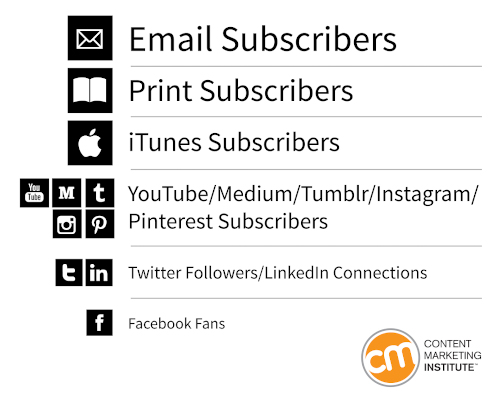
Electronic mail. When you write it like that, it seems pretty archaic, doesn’t it? Since the earliest days of the internet, email has maintained a continual presence.

Electronic mail. When you write it like that, it seems pretty archaic, doesn’t it? Since the earliest days of the internet, email has maintained a continual presence. And, despite various attempts to eliminate and replace it (anyone remember Google Wave?), it continues to persist. After all, how many of you reading this don’t have an email address? From a marketing perspective, email continues to be a valuable tool. In fact, it’s experiencing something of a renaissance. Here’s why we fell in love with email marketing…again… and why, perhaps, you should too (not that you can force such things).
Before we dive deeper into the world of email marketing, we thought it best to clarify our terminology. We’ll be using the terms email marketing, e-newsletters and e-shots interchangeably. If it arrives in your inbox, then it’s the subject of this article. No matter what format an email takes, it’s the underlying format that we’re big fans of.
If there’s such a thing as a universal language when it comes to digital marketing tools, it has to be email.
It doesn’t matter who you are emailing, where they are located or what type of device they are using, you can almost be certain that they’re going to receive it (unless you’re sending irrelevant, unsolicited mail which will hop into a junk box). In a world of such vast complexities, such simplicity is refreshing. It also offers a degree of resilience to your digital marketing efforts that is unmatched by other channels / forms of communication.
Email is a reliable protocol, isn’t owned by any one company, and employs open standards such as SMTP. It’s also asynchronous, reliable, multimedia and will work across myriad devices.
Email is as close as we’ve come to being the open standard for communication in the digital age.
If you’re trying to communicate an offer or service, you cannot leave email unaddressed.
Why do you send an email? Unless you’re just screaming into the void, it’s because you want someone to take an action. You could be placing an order, inviting someone to an event, requesting advice; whatever it is, email is about converting someone from being sedentary to being active.
This isn’t idle speculation. There’s a whole trove of data which proves that email converts. As with most marketing approaches, if you are thinking about what they need, and providing relevant and helpful content, you are improving the chances of success.
If you’re considering whether or not email marketing will work for you, consider the following points:
Marketers are often quick to point to the vast numbers of people using social media platforms such as Facebook, Instagram and Twitter. But what’s often overlooked is the huge user base of email worldwide. According to Statista, in 2019 there were approximately 3.9 billion email users! And, from the same Statista report, this number is expected to grow to 4.3 billion by 2023.
If you want to reach large numbers of people with your digital marketing efforts, then email should be your starting point.
How many emails do you send each day? We’re willing to bet it’s a lot. For many people, this number exceeds the number of social media posts they make each day. Email is a channel which people check regularly – and it’s a channel on which they are more likely to have push notifications enabled than others (hands up if you’ve muted a WhatsApp group recently. On the other hand you’re less likely to mute your work email account).
To put email usage into perspective, research body, Statista, estimates that in 2019 293.6 billion emails were sent and received each day. It’s a number which gets bigger. Much bigger. By 2022, the number of emails being sent each day should reach 347.3 billion.
If you’re going to use a popular marketing channel, put email at the top.
Measurement is the perennial challenge for marketers. If you’re going to invest in a marketing channel, you (and most importantly your boss / board of directors) are going to expect some return on investment. Handily, email has a solid track record of delivering a decent return on investment.
A well thought-out email marketing strategy can earn significant revenue for your business. The Data & Marketing Association (DMA) conducted an in-depth piece of quantitative research in 2019 and found that for every $1 invested in email marketing a return of $42 would be generated.
Use the right email platform and you’ll have access to a wide variety of analytics, testing functionality, timezone and other segmentation options which will allow you to hone and refine your email marketing strategy over time to deliver increasingly better results. The same can’t always be said of other marketing channels…
Despite claims of ‘email fatigue’ amongst many marketers, effective email marketing continues to deliver results. In 2018, researchers at Emarsys found that 81% of small and medium businesses used email as their main customer acquisition channel, with 80% of these same businesses also using email as their main customer retention channel.
If you’re looking for a cost-effective way of gaining and retaining customers, email marketing delivers.
With a solid email marketing strategy in place, you can cultivate a loyal customer base. Indeed, even if they aren’t already customers, you can use email (in combination with high quality content) to build an audience of fans for your brand. Fans who can be nudged towards purchases at a later date.
Statista’s email marketing research found that 49% of customers would like to receive promotional emails from their favourite brands on a weekly basis. Note our emphasis on the word favourite. Merely sending out emails to customers won’t suffice. To be effective, your email marketing must be part of a broader digital marketing and brand strategy.
Looking beyond stats to real world examples, publishers and media companies have taken note of the power of regular emails to build an audience (and eventually paying subscribers). For example The New York Times currently publishes over 50 separate newsletters which has generated over 13 million subscribers!
Email also cultivates your most loyal fans / customers. Why? Because not all subscriptions are equal. As the illustration below shows, you should think about your digital connections with your customers as a form of hierarchy – with email at the top.

As Joe Pulizzi of the Content Marketing Institute puts it:
“Email subscription is the most important type of relationship you can have with your subscriber, simply because we can control that connection the most. Our fans on Facebook or our followers on Twitter should be viewed as they are – temporary subscription opportunities with whom we can try to build relationships. Those connections are controlled by Facebook and Twitter, and the platforms can do whatever they want with them. We’ve obviously seen the changes Facebook has made, and the millions that brands have lost by focusing too much on these types of connections. Tread lightly.”
Which brings us neatly to our next point…
If you’re pouring money and effort into building a loyal customer base, it makes sense to do so on a platform which you control and own. As Joe Pulizzi mentions above, brands have built significant audiences on third-party platforms only to see an algorithm or policy change see these efforts wiped away in an instant.
If you concentrate your efforts on building a strong email list, you’re building an audience which you have much more control over. You can market on your terms rather than those of a Silicon Valley billionaire.
Should the worst happen and one day all social media disappears (is that cheering we can hear?), it is the businesses that have cultivated a strong audience around their email marketing that will be in the best position to survive and thrive.
If you’re reading this it’s likely you have a website of your own.
Email marketing is a brilliantly effective way of drawing people back to your website time after time. Provided you’ve got a well-thought-out strategy in place and you are producing high-quality content that your fans enjoy consuming, then you can use regular email newsletters to get people to visit your website on a regular basis. And, of course, whilst they are there enjoying your content you can be pitching your products and services to them simultaneously.
Email can form the core of your owned media strategy, building up an audience / community around your website – resulting in higher sales and higher levels of customer retention.
Your inbox can be quite an intimate space. Think of the personal emails you’ve received and sent over your lifetime. If you’ve earned the trust of a customer / fan enough that they’ve given you their email address by subscribing to your newsletter, then you have a much stronger relationship than someone who has merely followed your Twitter account or Facebook page.
This means that personalisation of your email marketing efforts can have a BIG impact.
Let’s refer to the facts for a second; according to the Harvard Business Review, personalisation can lift revenues by 5-15% and increase the efficiency of marketing spend by up to 10-40%. The team at Yes Lifecycle Marketing have found that emails with personalised subject lines had a 50% higher open rate than those without.
Email gives you the perfect opportunity to use personalisation within your digital marketing efforts. Due to the already strong relationship with your subscribers, you’ll find it has a marked impact. And, personalisation of emails (provided you are using a good email platform) is much easier than attempting to personalise your other digital marketing efforts such as social media posts.
Time is money. The more time you have to pour into repetitive marketing activities, the more expensive they become. This brings us to another benefit of email marketing; automation. With modern email platforms such as Mailchimp and Pure360, automating your emails is made easy, meaning you can schedule marketing emails in advance, freeing up your time to concentrate on other parts of your business.
If you want to take automation further, then you can employ tools such as intelligent timed send which monitors the time of day a customer most often opens their emails and schedules your email around this window of activity (increasing the likelihood of your email being read).
If you’ve not already implemented a comprehensive email marketing strategy, then we hope our words here have convinced you of the necessity of doing so.
Email may be viewed as an anachronism by many, but there’s a reason it’s been so resilient. It’s because it works!
Before we sign off this week’s article, we’ll leave you with one key thing to remember for your email marketing efforts:
“Create a newsletter so compelling people not only subscribe, but look forward to receiving and reading it.”
If you’d like to have a chat with some enthusiastic fans of email marketing, and find out how you can make email work for you and your business, then send an email (of course!) to rosie@kenyons.co.uk